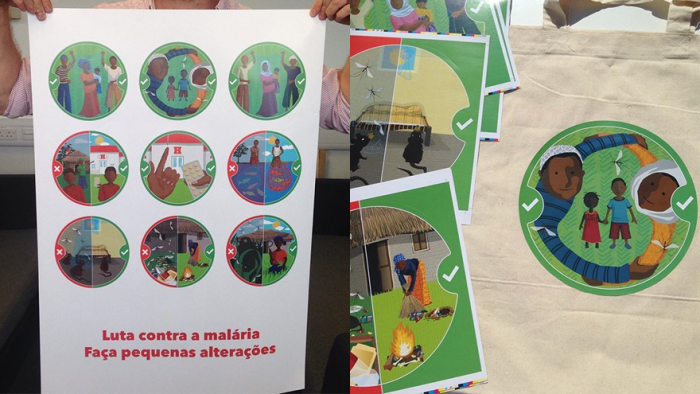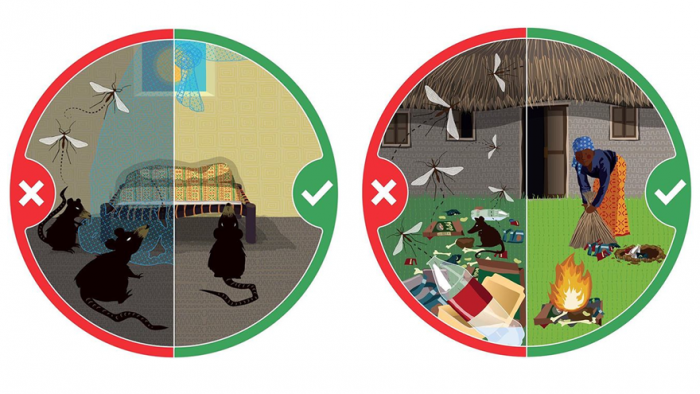In light of the ongoing presence of malaria that plagues regions of East Africa, designers from Scotland and Mozambique have come together to raise awareness about the illness and how to hamper the propagation of the mosquito.
Named “Learning from the locals”, this collaborative design project took place in the Nampula region of Northern Mozambique in 2016. It is led by Myrna MacLeod, senior design lecturer at the School of Arts and Creative Industries of Edinburgh Napier University.
MacLeod and her colleagues travelled to the island and met with local designers to find a way to combat the deadly disease through visual communication – simple designs that could be distributed with ease. Following a period of research and learning from locals about the ramifications of malaria prevention, the co-design campaign resulted in a series of nine circular sticker artworks that illustrate good practice in rolling back the risk of the disease.
The emblem designs feature ways in which to protect one’s home from mosquito habitation, how to reduce risk of them procreating nearby and how to seek treatment if malaria has been contracted.
According to MacLeod, “The completed stickers have been really well-received. There is a small amount of Portuguese in this batch for the local area where they were created, but it's possible to use the stickers in any country in East Africa – they speak for themselves.”
She stresses that the power of working in concert with other designers across the pond is invaluable in bringing about real change when targeting international problems.
“Our research shows that co-design could be the way forward when dealing with the world’s biggest health problems. We found that the over 100 people who contributed to the design of the stickers to be extremely engaged and helpful with the mission of this project.”
















